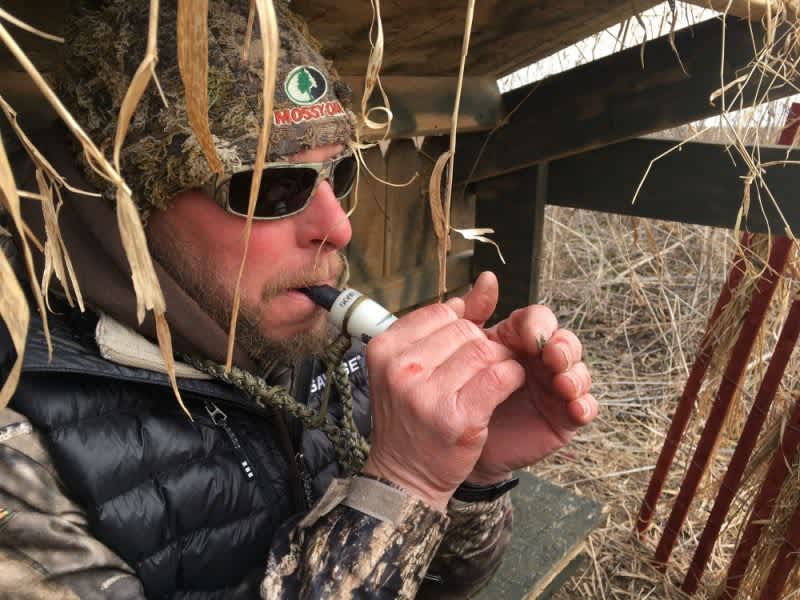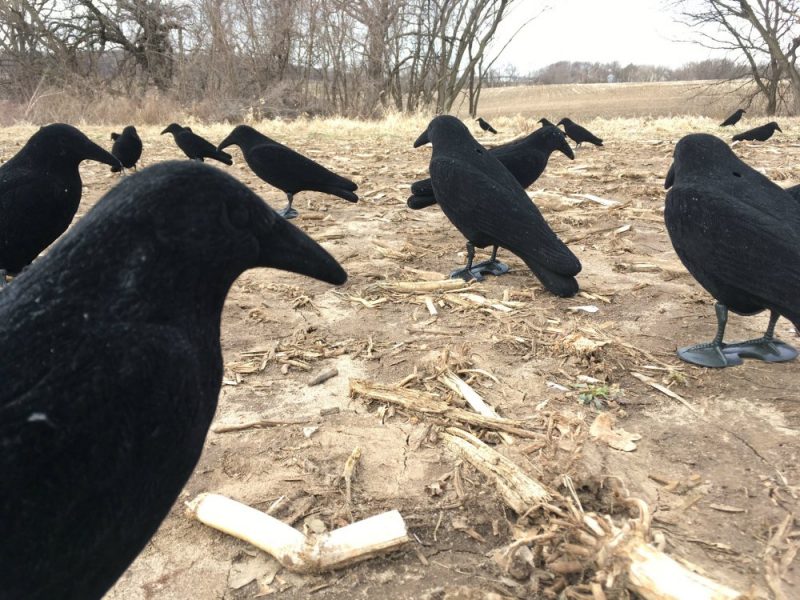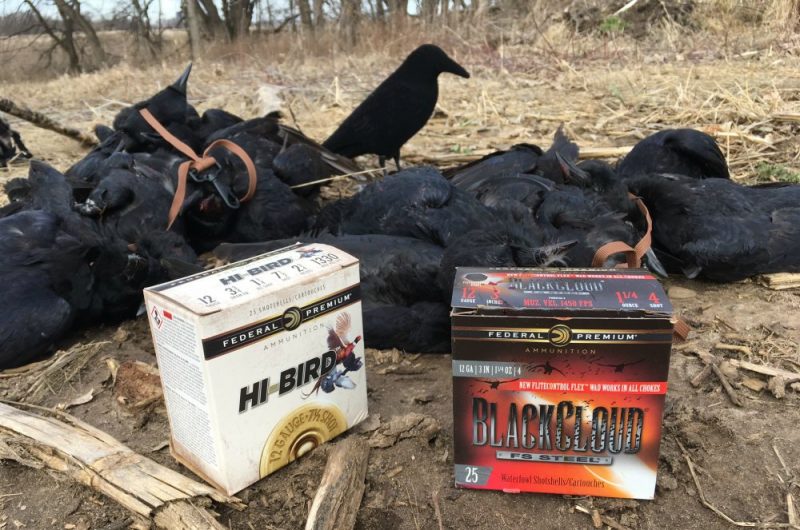Hunting with ‘The Crow Whisperer’
Dave Maas 04.04.17

Okay, the title to this article is a bit misleading. Let me explain.
Recently I had the amazing opportunity to join Todd “The Crowman” Gifford (above) in my home state of Minnesota for a morning crow hunt.
Note I didn’t say crow shoot. While some outdoor adventures are more shooting than hunting – a prairie dog shoot comes to mind – what I experienced was 100 percent hunting. In fact, it was so much like calling and decoying waterfowl that this article title could easily be changed to “Duck Hunting for Crows.”
Because the early bird gets the bird, I met Todd well before sunrise at his house. After loading his pickup with shotguns, ammo and decoys, we drove several miles to our destination, a picked cornfield in southeast Minnesota near the Cannon River.
Under the cover of darkness, Todd carefully placed 30 lifelike Soar No More crow decoys in the field. At the same time, I carried guns, ammo and other gear into our blind. Todd then drove off and stashed his pickup in the woods a few hundred yards away, and upon his return I started to pick his brain on crow hunting.
Listen and Learn
I consider myself a well-rounded outdoorsman, but this was my first time hunting crows. My mind was filled with questions.
“I know from turkey hunting that crows are some of the first birds to begin flying around at daybreak. I often rely on natural crow sounds to help locate roosted turkeys. Will you start calling before sunrise?”
”You got it,” he said. “My goal is to try and lure them into our decoy spread in a trickle. One, two or three at a time. I don’t want an entire flock to rush us because we’d kill a few of ’em, but then it’d be over for a long time. I’ll wait for a few crows to leave their roost and start flying and calling on their own, then I’ll reach out to them with the mouth call.”
Our ambush was along a shelterbelt containing mature trees, where a few fields and other shelterbelts joined, much like spokes in a wheel.

“Most of the crows roost in the larger bottom of the Cannon River,” he continued, “and that’s about 2 miles away. As it begins to get light, those crows will begin flying along these woods and field edges, basically running up all these feeder drainages. Eventually, most of the crows will be scattered across the farmland for miles; we just hope to have a few of them hear my calling and spot our decoys as they spread out and search for food.”
Soon, the sound of a distant crow interrupted my education, and Todd hammered back an answer on his Soar No More Craw Crusher mouth call.

“Keep your eyes peeled to the east along that field/wood edge. We should see birds coming from a distance.”
This might sound strange – especially to those who know me well – but in many ways, I’ve found duck and goose hunting, and now crow hunting, to be more exciting than deer hunting. The reason is that usually things happen slowly in the deer woods. You spot whitetails in the distance, and you have time to prepare. Not so in a duck, goose or crow blind.
Because birds can fly in from any direction, and because there’s no guarantee they’ll announce their arrival with vocalizations, I find myself with shotgun raised, finger checking the location of the gun safety, and eyes scanning the sky. Constantly.
This morning, I don’t want to be caught unprepared – and disappoint my guide – so my heart races as I attempt to be 100 percent focused and ready. Of course, my over-anxiousness finally mellows with time in the blind, but I’m still on edge.
Crow Fever
“Here comes one, Dave. See it?”
And even though I’ve seen thousands of crows in my lifetime, this one is different. On this March morning, I want it just as badly as a trophy buck or magnum gobbler. I want to kill my first crow.
As the bird answers Todd’s call and flies unhurriedly toward our ambush, I push off the safety and prepare to shoot. But the crow doesn’t set its wings and attempt to land 15 yards in front of us. Instead, it cautiously circles high overhead.
“Take him,” Todd commands.
Call it “crow fever” if you like, but I miss the first shot and then forget to work the action on my pump 12 gauge for the follow-up attempt. The bird quickly turns and races away along the wood edge, taking two other trailing crows with it.
“Sorry.” It’s the only thing I can think of to say as I shake my head.
“Don’t worry about it, bud,” Todd says laughing. “That was a wary old bird and nothing close to a chip-shot. You’ll get a lot more chances. We’ve got all morning. I’ll bring a few right into your lap. Promise.”
To make a long story short, he was right.
Over the next 3 hours, The Crow Whisperer coaxed dozens of crows to our ambush, and even though I’ll be the first to admit that my wing-shooting needs significant improvement, I killed 19 crows. Todd dropped three additional birds that refused to fly into my safe shooting zone, but like all great guides, he let me do 95 percent of the shooting. Ammo of choice was Hi-Bird and Black Cloud from Federal Premium.

“Man, it was so much fun watching those crows set their wings and drop on the decoys,” Todd commented as we drove from the field. “I just focused on your gun barrel. You were so patient tracking them . . . I’d see a bird changing its direction just slightly to figure out where it wanted to land, and your barrel would follow its path. Then you’d hammer it just 20 feet over the dirt. Dude, that was awesome!”
It was awesome. And the best part is Todd taught me that “duck hunting for crows” is something I can do on my own, on the properties I already hunt regularly for deer and turkeys in Minnesota, South Dakota and Wisconsin.
The best outdoor guides are teachers – and I’d just learned from the master.
Editor’s note: Stay tuned this week to OHUB for two follow-up articles detailing the killer crow gear used on this hunt.


